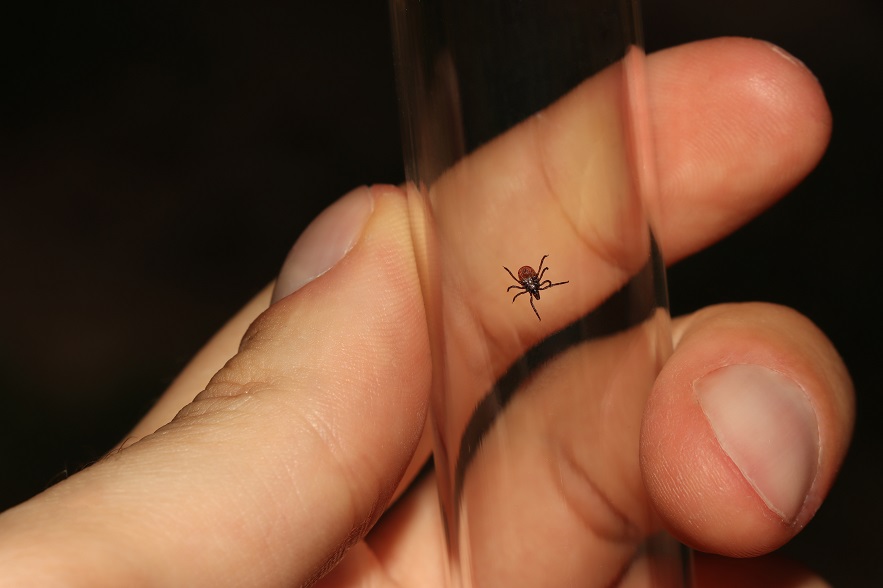Did you know that after a tick bite that you may experience heart problems?
What comes to mind when you think of a tick? If you guessed Lyme disease, you are correct. The number of people infected with this disease in the United States continues to rise year after year. According to private health insurer reports, the diagnosis of Lyme disease increased by up to 357% in rural areas and 65% in urban areas between 2007 and 2021.
This may be surprising given that ticks are well-established in human-populated places. This little arachnid can be found practically anywhere: in backyard gardens, sidewalk grasses, parks, meadows, and forests.
Of course, not all ticks are disease carriers. Borreliosis is caused by Borrelia Spirochetes, which live in ticks’ digestive tracts. In terms of illness, the arachnid poses no significant risk as long as it hasn’t bitten us and we get rid of it as soon as possible. Alternatively, if we are bitten and become infected, the bacteria enter our bloodstream within 24 to 48 hours.
To reduce our risk of infection, it is important to remove the tick from the skin as soon as possible and as thoroughly as possible. Using tweezers, grab the arachnid as close to the skin as possible and pull it out with a decisive slightly rotating movement.
Can Lyme Disease causes cardiac complications?
Lyme disease infection, often known as Lyme disease, is generally associated with neurological problems. However, not everyone is aware that the bacteria that causes it can also reach the heart. Tick-related cardiac problems are classified into two distinct types:
- Inflammation of the heart caused by Lyme disease.
- Lyme Cardiatis a bacterial borreliosis infection that occurs when the bacteria enters the heart tissue.
So what is the distinction? First and foremost, the exposure date and, not surprisingly, the symptoms.
Lyme Cardiatis
Lyme heart disease can occur 2-6 weeks after being bitten by an infected tick. All because the bacteria that cause Lyme disease enter the heart’s tissues and interfere with the electrical signals that regulate its beating.
A Heart block, also called AV block, can occur as a result of a disruption in electrical signals from the upper to lower chambers of the heart. A heart-related electrical system shutdown is extremely dangerous. It can cause dizziness and fainting. When the heart stops beating on a regular basis, patients may experience arrhythmias and even cardiac arrest.
Fortunately, this situation is rare. It is estimated that only in 4-10% of patients with untreated Lyme disease, while AVB – in 1%.
Inflammation of the heart caused by Lyme disease
Symptoms of Lyme disease can appear when the disease is not detected in time and properly treated. This is usually due to seeing the tick on the skin too late or not observing it at all.
If the arachnid inadvertently infected us with Lyme disease and the disease has progressed to a chronic stage (about a year after infection), it may result in:
● pericarditis,
● myocarditis,
● endocarditis,
● arrhythmias of various kinds,
● dilated cardiomyopathy.
How do you recognize these symptoms? The symptoms of such complications vary. Shortness of breath, fatigue, chest pain, irregular or rapid heartbeat, and even swelling of the legs and ankles, stinging sternal pain, dizziness, and increased number of breaths are all symptoms.
To ensure that these are cardiac problems caused by Lyme disease and not other disorders, suitable diagnostic tests must be performed. What? ECG, prolonged ECG, exercise testing, echocardiographic examination, and magnetic resonance imaging of the heart are all recommended by doctors. A correct diagnosis increases the likelihood of a successful cure. More than 90% of patients are expected to recover completely.
How can you avoid cardiac complications caused by a tick bite?
It’s simple: don’t get bitten by a tick! It is, however, easier said than done. Avoiding tick-infested areas is difficult. Sometimes, this could mean completely barricading yourself inside your home!
As a result, after returning from a park or forest, you must be vigilant for ticks, use appropriate repellents, and carefully examine your body. If a tick becomes embedded in the skin, it should be removed as soon as possible and in the proper manner. It’s important to follow the following guidelines:
- The tick must not be lubricated in any way,
- The tick must not be crushed, burned, or poured with spirit,
- Correct removal of the tick necessitates the use of tweezers with a thin tip, a lassa, or a tick-catcher,
- The puncture site should be disinfected and observed for erythema or swelling,
Other symptoms that should arouse vigilance after removing the tick are: muscle and head pains, fatigue and increased body temperature (if they appear, you should see a doctor!).




